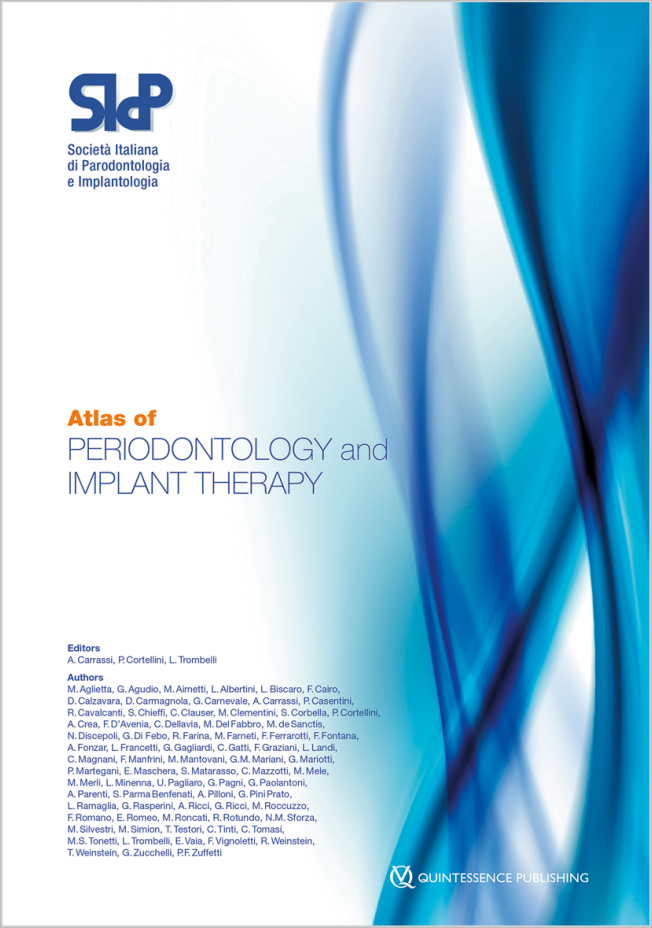International Journal of Computerized Dentistry, 2/2021
SciencePubMed-ID: 34085498Seiten: 125-131, Sprache: Englisch, DeutschNicali, Andrea / Pradal, Giulia / Carrassi, AntonioZiel: Ziel der vorliegenden Studie war es, die Möglichkeit zu testen, mithilfe generischer Software eine optimierte prothetische Gerüststruktur unter Beachtung der Verteilung der einwirkenden Belastungen und Kräfte zu konstruieren. Originär und innovativ an dieser Studie ist die Möglichkeit, die prothetische Gerüststruktur im Hinblick auf die patientenindividuelle Biomechanik beim Kauen zu konstruieren, mit dem Zweck, eine bessere Materialeffizienz als bei einer herkömmlich konstruierten Prothese zu erreichen.
Material und Methode: Der Ausgangsdatensatz im STL-Format wurde mit der Software Rhinoceros (Fa. McNeel, Seatle, WA, USA) mit tOpos-Plugin (Fa. McNeel) verarbeitet. Es wurde entschieden, die komplette prothetische Lösung als Gesamtvolumen der Strukturanalyse und Topologieoptimierung zu unterziehen, da der Zahnersatz den Belastungen beim Kauakt in toto ausgesetzt ist. Die Software erhielt Angaben zum Material sowie zum Betrag und der Richtung der einwirkenden Kräfte. Anschließend wurde eine Steifigkeitsoptimierung durch Volumenmaximierung durchgeführt.
Ergebnisse: Das Volumen der topologieoptimierten Struktur betrug 2 % dessen des Ausgangsmodells und hatte eine vollkommen andere Form als ein herkömmliches Modell. Die neue Form war durch Trabekelstrukturen gekennzeichnet, die einer normale Knochenarchitektur ähneln. Das Material war ausgehend von den Lastangriffspunkten sowie der Richtung und Größe der wirkenden Kräfte verteilt.
Schlussfolgerung: Nach Untersuchung der Anwendbarkeit des vorgeschlagenen Workflows und der bislang erzielten Resultate, liegt die wichtigste klinische Bedeutung in der verglichen mit der herkömmlichen Methode größeren Materialeffizienz des topologieoptimierten Zahnersatzes bei gleicher Festigkeit.
Schlagwörter: prothetische Substruktur, Strukturanalyse, Finite-Elemente-Methode (FEM), Finite-Elemente-Analyse (FEA), mastikatorische Biomechanik, prothetische Komplikation, CAD/CAM-Technik
Journal of Oral & Facial Pain and Headache, 2/2018
Seiten: 178-188, Sprache: EnglischVaroni, Elena M. / Faro, Alfredo F. Lo / Lodi, Giovanni / Carrassi, Antonio / Iriti, Marcello / Sardella, AndreaAims: To evaluate the efficacy of melatonin compared to placebo in reducing pain associated with burning mouth syndrome (BMS), as well as side effects of treatment and effects on sleep quality, anxiety, and serum and salivary melatonin levels.
Methods: In this triple-blind, randomized clinical trial, 20 BMS patients (mean age ± standard deviation: 64.4 ± 11.5 years; range: 35 to 82 years) were enrolled to receive melatonin (12 mg/day) or placebo for 8 weeks in a crossover design. After treatment, changes in pain from baseline were ascertained by patient self-assessment with a verbal category scale and a visual analog scale. Secondary outcomes included evaluation of changes in sleep quality and anxiety. Data were subjected to analysis of variance (ANOVA), Fisher exact test, paired t test, Wilcoxon signed rank test, or chi-square test, as appropriate.
Results: Melatonin was not superior to placebo in reducing pain. Melatonin significantly improved anxiety scores, though without strong clinical relevance. Independent of treatment, sleep quality did not significantly change during the trial, although melatonin slightly increased the number of hours slept. After active treatment, the mean ± standard error serum melatonin level peaked at 1,520 ± 646 pg/mL. A generally safe pharmacologic profile of melatonin was observed, and the placebo and melatonin treatments resulted in similar adverse effects.
Conclusion: Within the limitations of this study, melatonin did not exhibit higher efficacy than placebo in relieving pain in BMS patients.
Schlagwörter: anxiety, indoleamine, orofacial pain, sleep, stomatodynia
The International Journal of Oral & Maxillofacial Implants, 1/2016
DOI: 10.11607/jomi.2588, PubMed-ID: 26800178Seiten: 191-194, Sprache: EnglischDemarosi, Federica / Varoni, Elena / Rimondini, Lia / Carrassi, Antonio / Leghissa, Giulio CesareImpacted maxillary canine teeth commonly occur in the general population. The traditional therapeutic approach comprises fenestration and orthodontic traction; however, if traction is not feasible or the patient refuses orthodontic treatment, an alternative solution is to remove the impacted tooth and immediately place an implant. This technical note describes a novel surgical approach to rehabilitation after impacted canine tooth removal, entailing immediate placement of a long implant in combination with regenerative materials and a barrier. Of note, this procedure preserves the apical ridge bone crest, allowing implant anchorage and primary stability to be achieved.
Schlagwörter: immediate dental implants, impacted tooth, oral surgery
The International Journal of Oral & Maxillofacial Implants, 6/2002
Seiten: 793-798, Sprache: EnglischRimondini, Lia / Cerroni, Loredana / Carrassi, Antonio / Torricelli, PaolaPurpose: The microbial colonization of new ceramic materials developed for abutment manufacturing was assessed. Materials and Methods: The materials used in these experiments were disks of "asfired" and "rectified" ceramic material made of tetragonal zirconia polycrystals stabilized with yttrium (Y-TZP) and commercially pure grade 2 titanium (Ti) with corresponding eluates. They were tested in vitro with the following bacteria: Streptococcus mutans, S sanguis, Actinomyces viscosus, A naeslundii, and Porphyromonas gingivalis. Proliferation was evaluated on plates by inhibitory halos around pits, previously inoculated with eluates obtained from the materials. Bacterial adhesion on materials was quantified by spectrophotometric evaluation of the slime production by the same bacteria. Moreover, early bacterial adhesion was evaluated in human volunteers and observed with SEM. Results: No inhibition of bacterial proliferation using eluates was observed. In vitro as-fired and rectified Y-TZP showed significantly more adherent S mutans than did Ti disks, while S sanguis seemed to adhere easily to Ti specimens. No differences were noted for Actinomyces spp and P gingivalis. In vivo Y-TZP accumulated fewer bacteria than Ti in terms of the total number of bacteria and presence of potential putative pathogens such as rods. No differences were observed between rectified and as-fired Y-TZP. Discussion: Overall, Y-TZP accumulates fewer bacteria than Ti. Conclusion: Y-TZP may be considered as a promising material for abutment manufacturing.





